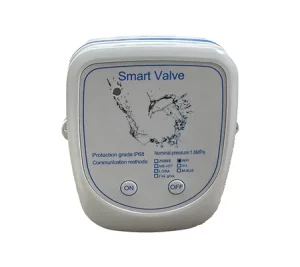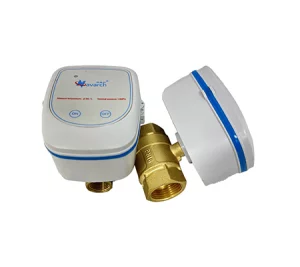Évitez que votre demande ne soit retardée dans la réponse, veuillez saisir votre WhatsApp/WeChat/Skype avec le message, afin que nous puissions vous contacter dans un premier temps
Nous vous répondrons dans les 24 heures. En cas d'urgence, veuillez ajouter WhatsApp : +8613188899036, ou WeChat : 0531-87968777. Ou appelez directement 0531-87968777.
* Nous respectons votre confidentialité et protégeons toutes vos informations. Nous utiliserons vos informations uniquement pour répondre à votre demande et ne vous enverrons jamais d'e-mails ou de messages promotionnels non sollicités.
Are your industrial systems draining money every day? Most plant managers don’t even see the waste happening right under their noses. Old valve technology is the hidden culprit behind your rising costs, safety concerns, and efficiency losses.
Think about it. Right now, your outdated valves could be causing:
The problem is worse than you think. Without smart valve technology, you’re essentially operating blind – unable to detect problems until they become emergencies, costing you time, money, and peace of mind.
Vannes intelligentes are modern flow control devices that combine automated operation with real-time monitoring capabilities. Unlike basic mechanical valves, smart valves contain sensors, actuators, and controllers that work together to regulate flow with precision while providing valuable system data.
Key components of smart valve systems include:
These valves don’t just open and close – they think. They can detect problems before humans notice them. They can adjust themselves without manual intervention. They can talk to your control systems to help make better decisions.

Vanne intelligente WiFi
┌────────────────────────────────┐
│ SMART VALVE │
├────────────┬─────────┬─────────┤
│ ACTUATOR │ SENSORS │CONTROLLER│
├────────────┼─────────┼─────────┤
│ Opens/ │ Measures│ Makes │
│ closes │ flow & │ automatic│
│ with │ pressure│ decisions│
│ precision │ in real │ based on │
│ │ time │ data │
└────────────┴─────────┴─────────┘
| Industrie | Cas d'utilisation | ROI Driver |
|---|---|---|
| Traitement de l'eau | Leak prevention | 40% reduced waste |
| Pétrole et gaz | Remote pressure regulation | $2M/yr safety fines avoided |
| Pharma | Batch process compliance | Audit trail automation |
| Traitement chimique | Corrosive Fluid Control | 60% lower actuator replacements |
| Energy | Steam System Optimization | 15-22% reduction in boiler fuel use |
The water industry faces a critical challenge. According to recent studies, water systems around the world lose up to 40% of their supply due to leaks and system inefficiencies. Traditional valves can’t detect these problems until significant damage occurs.
This is where the situation gets painful. Every day your system operates with conventional valves is another day of wasted resources, potential compliance violations, and maintenance headaches waiting to happen.
Smart valve technology from industry leaders like Navarch offers the solution you need. Their intelligent water valves feature state-of-the-art leak detection capabilities that can identify problems before they become disasters.

intelligent water valves
Before upgrading to smart valves, you must check if your current systems can support them. Many factories face integration problems when they skip this step.
Key compatibility factors:
The good news? Modern manufacturers design smart valves with backward compatibility in mind. Companies like Navarch produce advanced monitoring systems that can work with both new and existing infrastructure, making the transition smoother than you might expect.
Smart valves connect to your network. This means you need to protect them from cyber threats.
Essential security measures include:
With the right protocols in place, smart valves enhance security rather than compromise it. They provide early warnings about abnormal operations that could indicate tampering or system failure.
The real power of smart valves comes from their ability to predict problems before they happen.
Setting up predictive maintenance involves:
When properly implemented, these systems can reduce downtime by up to 70% and extend valve life significantly.
Traditional mechanical valves rely on simple mechanisms that can fail without warning. Modern smart valves include sophisticated fail-safe systems that activate during power outages or pressure spikes.
ANSI/ASME B16.34 compliance ensures these valves meet the strictest safety standards. This means even in worst-case scenarios, your system remains protected.
Smart valves optimize flow patterns to reduce turbulence, cavitation, and wear.
Technical benefits include:
These improvements lead to energy savings between 15-25% in most applications.
Moderne intelligent valve systems use various wireless protocols to communicate with control systems.
Bandwidth requirements comparison:
| Protocole | Gamme | Battery Life | Data Rate | Meilleur pour |
|---|---|---|---|---|
| LoRaWAN | 10+ km | 5-10 years | Faible | Remote sites |
| Zigbee | 100m | 1-2 years | Moyen | Building systems |
| Modbus | Wired | N/A | Haut | Critical control |
| HART | Hybrid | Varies | Moyen | Industrial sites |
Selecting the right protocol depends on your specific application needs and existing infrastructure.
When evaluating smart valve solutions, focus on these key factors:
Always verify compliance with:
These certifications ensure your valves meet global standards for safety, performance, and reliability.
Smart valves should undergo rigorous testing including:
Leading manufacturers like Navarch put their vannes de régulation de débit through multiple quality checks before shipping. With production capacity of up to 8,000 tons annually, they maintain consistent quality across large orders.
A German chemical complex faced serious valve corrosion issues when handling hydrogen sulfide. Traditional valves needed replacement every 6-8 months, causing frequent downtime.
After switching to PTFE-lined smart valves with corrosion sensors, they achieved:
This demonstrates how the right valve selection can transform operational efficiency.
The future of valve management lies in digital twin technology – virtual models that mirror physical valves in real time.
Benefits include:
Leading manufacturers are already developing these capabilities into their valve product lines.
As industrial systems become more connected, security becomes paramount. Next-generation smart valves will feature:
These measures will protect critical infrastructure from increasingly sophisticated cyber threats.
ESG compliance is becoming a regulatory requirement in many industries.
Smart valves contribute to sustainability through:
Companies like Navarch are leading this charge with their energy-saving pressure regulating valve technologies specifically designed to reduce environmental impact while improving system performance.
| Projet | Défi | Solution de vanne intelligente | Résultat |
|---|---|---|---|
| Gulf Coast Refinery | Manual valve failures causing pressure spikes | Wireless-enabled emergency shutdown valves | 99.8% uptime; zero unplanned shutdowns in 18 months |
| Swiss Pharma Plant | Batch contamination risks | Sterile control valves with CIP automation | Zero contamination events; 30% faster batch cycles |
| California Water District | Undetected pipeline leaks | Acoustic sensors + automated shutoffs | 12M gallons saved quarterly; leak detection in <30 secs |
| German Chemical Complex | Hydrogen sulfide valve corrosion | PTFE-lined smart valves with corrosion sensors | 5x longer service life; predictive replacements |
These real-world examples show the transformative impact of properly implemented smart valve technology across diverse industries.
The top smart valve solutions in the market achieve:
Field testing confirms exceptional reliability:
This performance level is only possible with valves manufactured under strict quality control standards with multiple testing phases, like those produced by Navarch’s five production lines.
The problem is clear: outdated valve technology is costing you money, compromising safety, and limiting productivity.
The situation is urgent: every day you delay upgrading to smart valve technology means more waste, more risk, and lost competitive advantage.
The solution is available: with modern regulator valves from trusted manufacturers, you can transform your industrial operations. Companies like Navarch provide not just the valves themselves but complete system integration services and technical support to ensure successful implementation.
Take action now by:
With expert guidance and quality components, the transition to smart valve technology can be smooth, cost-effective, and transformative for your operations.
Smart valve technology represents a fundamental shift in how industrial systems operate. By combining advanced sensors, automated control, and data analytics, these devices deliver benefits that traditional valves simply cannot match.
The evidence is clear: organizations that invest in smart valve technology see significant improvements in:
As industrial processes become increasingly complex and resource constraints more pressing, smart valves will be essential tools for competitive operation. Manufacturers with advanced production facilities, extensive technical expertise, and a focus on quality control will lead the market in providing these critical components.
The question isn’t whether your operation will eventually need smart valves – it’s whether you’ll implement them early enough to gain the competitive advantage they offer.
Ready to explore how smart valves can transform your operations? Start with a comprehensive system assessment to identify your highest-priority applications and the potential ROI you could achieve with modern valve technology.
